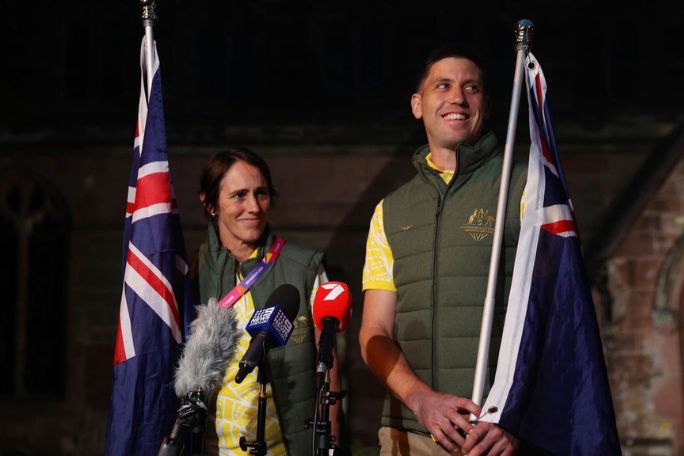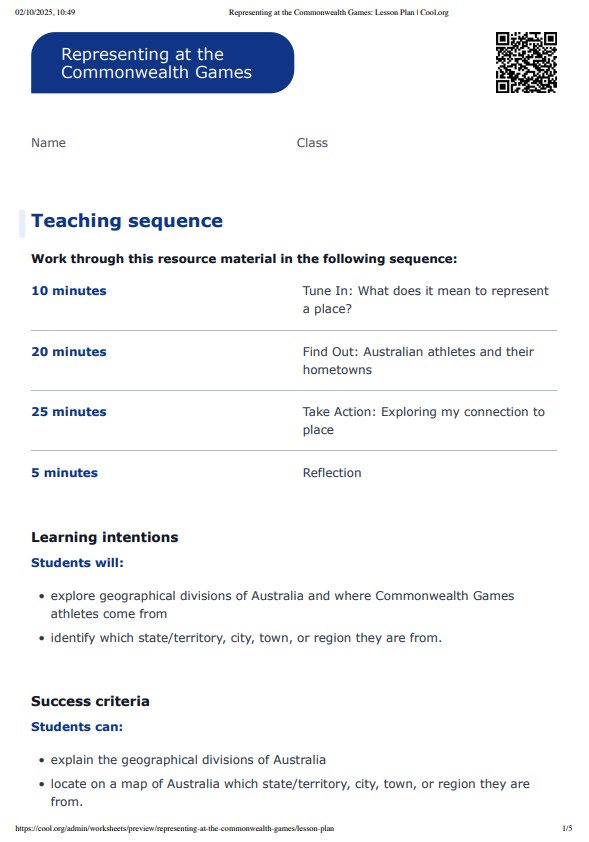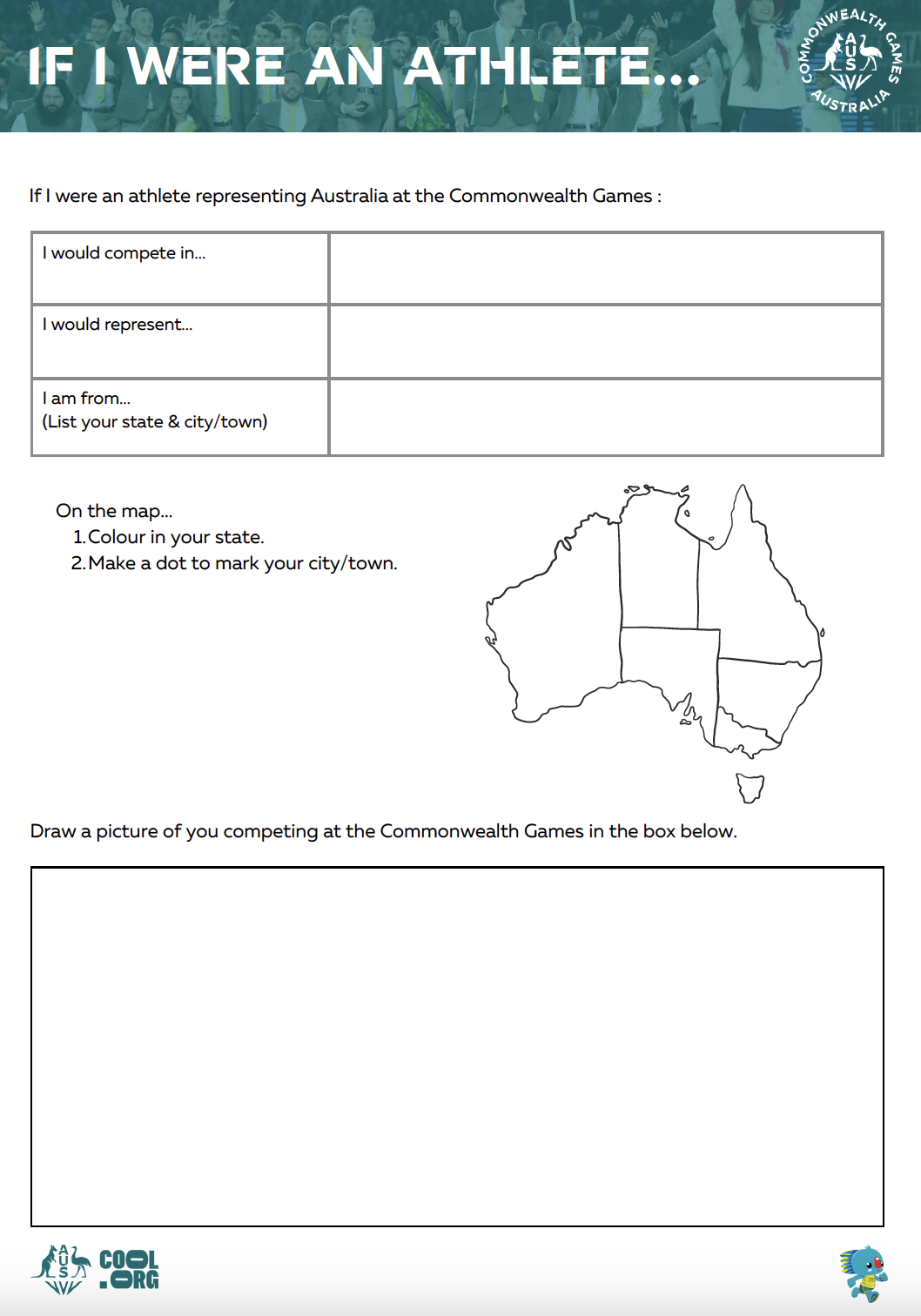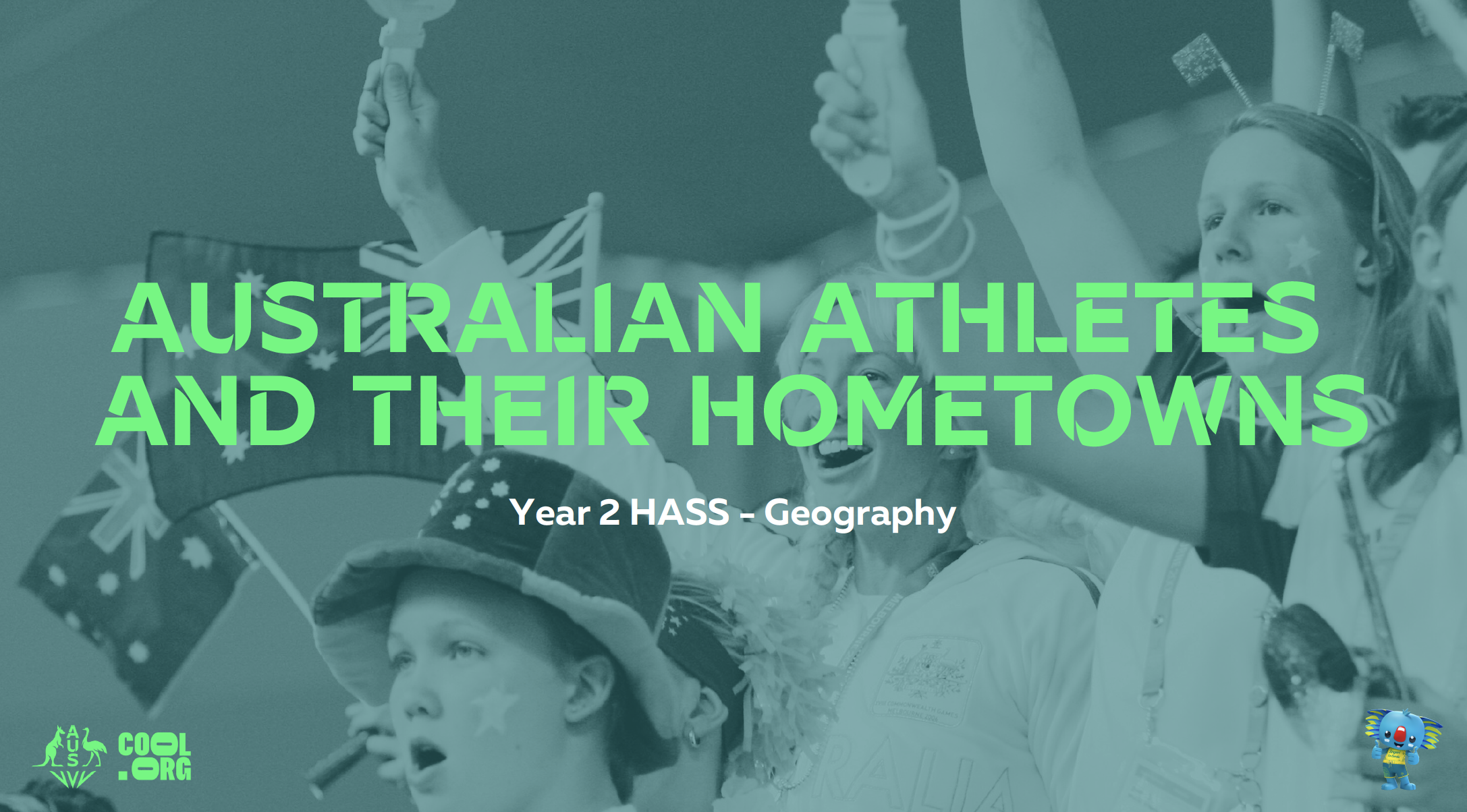Lesson summary
Students will learn about geographical divisions within Australia by exploring the topic of Australian athletes involved in the Commonwealth Games. They will learn what it means to ‘represent’ a place, and investigate the places prominent Australian athletes represent in relation to their own state and hometown. Additionally, students will use a map to identify their own connections to places within Australia.
Learning intentions
Students will:
- explore geographical divisions of Australia and where Commonwealth Games athletes come from
- identify which state/territory, city, town, or region they are from.
Success criteria
Students can:
- explain the geographical divisions of Australia
- locate on a map of Australia which state/territory, city, town, or region they are from.
Lesson guides and printables
Curriculum links
Select your curriculum from the options below.
Lesson details
Skills
This lesson is designed to build students’ competencies in the following skills:
- critical thinking
- curiosity
Curriculum Mapping
Australian Curriculum (v9.0) content description:
Year 2 HASS
- Students learn about how places can be spatially represented in geographical divisions from local to regional to state/territory, and how people and places are interconnected across those scales (AC9HS2K03).
Relevant parts of Year 2 HASS achievement standards: Students identify that places can be spatially represented in different geographical divisions.
General capabilities: Personal and Social Capability
Cross-curriculum priority: Aboriginal and Torres Strait Islander Histories and Cultures
Level of teacher scaffolding: Low – the teacher will need to confidently facilitate class discussion and encourage students to complete an independent task.
UN Sustainable Development Goals
- Target 4.7: By 2030, ensure that all learners acquire the knowledge and skills needed to promote sustainable development, including, among others, through education for sustainable development and sustainable lifestyles, human rights, gender equality, promotion of a culture of peace and non-violence, global citizenship and appreciation of cultural diversity and of culture’s contribution to sustainable development.
Resources Required
- AIATSIS Map of Indigenous Australia (aiatsis.gov.au/explore/map-indigenous-australia)
- Australian Athletes and Their Hometown Visual Explainer
- device for displaying presentations
- Student Worksheet
- whiteboard and whiteboard markers
Additional Info
These resources have been created with the support of the Australian Commonwealth Games Team, via Commonwealth Games Australia.
The Australian Commonwealth Games Team are set to take on the athletes of he world at the Glasgow 2026 Commonwealth Games from next year, and together the more than 250 athletes in green and gold aim to be the top nation at the Games in terms of gold and overall medals won, the number of medallists, and the number of sports winning medals.
You can cheer on Australia’s best across the screens of 7 and 7Plus from 23 July 2026.
Related Professional Learning
Building a Positive Classroom Culture With Our Students
Quick summary: This course will explore strategies for building a positive classroom culture with your students, regardless of their age, year level, or frequency of teaching.




Welcome back!
Don't have an account yet?
Log in with:
Create your free Cool.org account.
Many of our resources are free, with an option to upgrade to Cool+ for premium content.
Already have an account?
Sign up with:
By signing up you accept Cool.org's Terms and Conditions(Opens in new tab) and Privacy Policy(Opens in new tab).